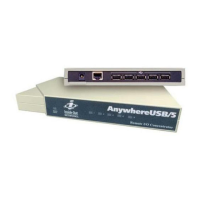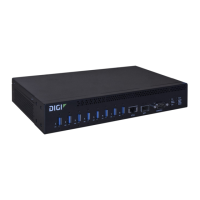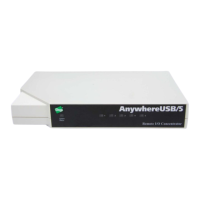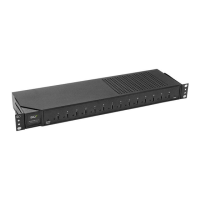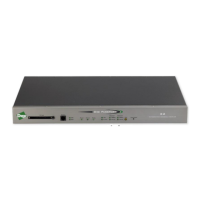Interfaces Wide Area Networks (WANs)
AnywhereUSB® Plus User Guide
160
ii. Set the relative weight for default routes associated with this interface. For multiple
active interfaces with the same metric, the weight is used to load balance traffic to the
interfaces.
(config network interface my_wan)> ipv4 weight num
(config network interface my_wan)>
iii. Set the management priority. This determines which interface will have priority for
central management activity. The interface with the highest number will be used.
(config network interface my_wan)> ipv4 mgmt num
(config network interface my_wan)>
iv. Set the MTU:
(config network interface my_wan)> ipv4 mtu num
(config network interface my_wan)>
v. Configure how to use DNS:
(config network interface my_wan)> ipv4 use_dns value
(config network interface my_wan)>
where value is one of:
n
always: DNS will always be used for this WAN; when multiple interfaces have
the same DNS server, the interface with the lowest metric will be used for DNS
requests.
n
primary: Only use the DNS servers provided for this interface when the
interface is the primary route.
n
never: Never use DNS servers for this interface.
vi. Enable DHCP Hostname to instruct the AnywhereUSB Plus device to include the
device's system name with DHCP requests as the Client FQDN option. The DHCP
server can then be configured to register the device's hostname and IP address with
an associated DNS server.
(config network interface my_wan)> ipv4 dhcp_hostname true
(config network interface my_wan)>
n
See RFC4702 for further information about DHCP server support for the Client
FQDNoption.
n
See Configure system information for information about setting the
AnywhereUSB Plus device's system name.
b. See Configure SureLink active recovery to detect WAN/WWAN failures for information
about configuring active recovery.
7. (Optional) Configure IPv6 settings:
a. Enable IPv6 support:
(config network interface my_wan)> ipv6 enable true
(config network interface my_wan)>
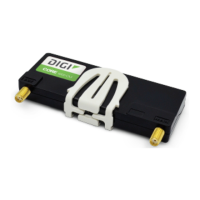
